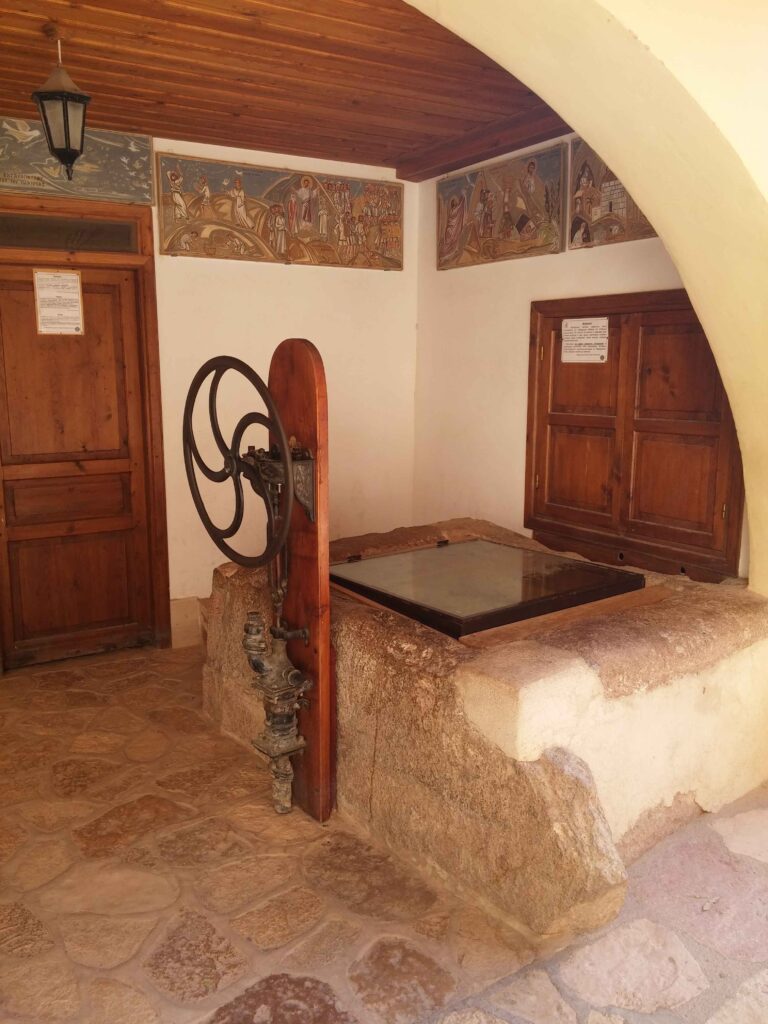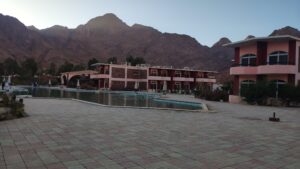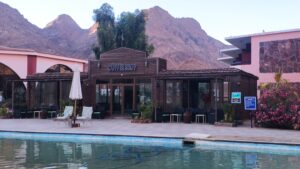Dear Journal,
June 27th
I am taking a few minutes to check in with you before we are back on the bus heading to our hotel in Israel. Right now, I am sitting in a little hotel at St. Catherine’s, very close to the base of Mount Sinai in Egypt. We arrived here yesterday and had dinner.
There was an option to take the midnight climb to the top of Mt. Sinai to see the sunrise. Participants would hike to the 7,497-foot (2,285-mt.) peak in the predawn darkness, witness the first light illuminating the mountaintop chapel and mosque, and then descend to the 6th-century Monastery of St. Catherine, built where Moses is believed to have seen the Burning Bush. I did not pack the clothes or shoes to make such a climb, nor did I have the will to climb that long in the dark. Instead, I appreciated just being near the mountain and admiring its beautiful peaks. The testimonies of those who made the trek were inspiring. They spoke about the diverse nations represented there and the worship songs groups sang in their native tongues.
My memorable moment was taking a small tour of St. Catherine’s Monastery after breakfast. The hotel is only a few miles from the monastery. As our bus dropped us off, it was also picking up people who were coming down the mountain.
Saint Catherine’s Monastery, officially the Sacred Autonomous Royal Monastery of Saint Catherine of the Holy and God-Trodden Mount Sinai, is a Christian monastery located in the Sinai Peninsula of Egypt. It was built between 548 and 565, and is the world’s oldest continuously inhabited Christian monastery. Built by orders of the Byzantine emperor Justinian I, it encloses what is claimed to be the burning bush seen by Moses. Centuries later, the purported body of Saint Catherine of Alexandria was taken to the monastery, turning it into an important pilgrimage site and eventually renaming it after the saint.
Controlled by the autonomous Church of Sinai, which is part of the wider Greek Orthodox Church, the monastery became a UNESCO World Heritage Site in 2002 for its unique importance in the traditions of Christianity, Islam, and Judaism. The site also holds the world’s oldest continually operating library, with unique or extremely rare works, such as the Codex Sinaiticus and the Syriac Sinaiticus, as well as possibly the largest collection of early Christian icons, including the earliest known depiction of Jesus as Christ Pantocrator.
It is a small area to walk around, but I was most fascinated by Moses’ Well. North of the catholicon, there is preserved to this day the well at which Moses met the seven daughters of Jethro, as recorded in the scriptures (Exodus 2:15-22). The water is still used by the community, by means of a pump. Imagine standing where Moses encountered the next season of his destiny after he had fled Egypt.
We returned to the hotel only to grab our things from our rooms and wait in the lobby for the next destination. We will be crossing the Israel-Egypt border soon. Egypt has been amazing, and I know we haven’t even seen everything. I will need to return again.
This is part 3 of an 8 part series.




